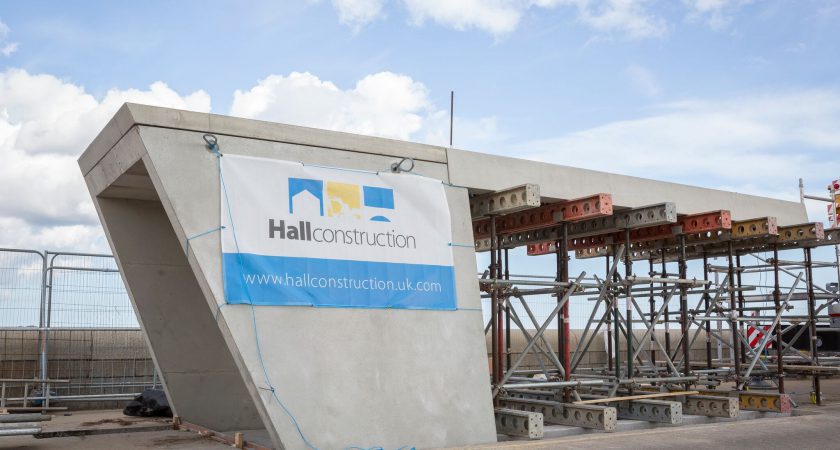
Aquacast blocks for intertidal estuary defences at Aldeburgh Golf Club
Aquacast blocks were chosen as the preferred solution to reduce the risk of further settlement which would eventually lead to the sinking of the defence walls.
Get in touch Download Case Study PDFFounded in 1884, Aldeburgh Golf Club is England’s second oldest maritime heathland course. The River Course, consisting of nine holes, overlooks a wide, sweeping reach of the River Alde, with wonderful views across the marshes. The course was protected from tidal flooding by earth banks, which had settled over the sixty years since they were last raised. In 2013 a tidal surge breached these defences flooding 120 Ha. of fresh water grazing marsh and the golf course on each spring tide. In 2014 a new defence was constructed along a shorter retreated line.
As a consequence of settlement over the last eight years, the new defences had settled by up to 0.5m.
As a result, overtopping was becoming a common occurrence on spring tides leading to parts of the course occasionally becoming unplayable.




Aquacast blocks were chosen as the preferred solution as the engineer (Hawes Associates) designing the maintenance works was keen to reduce the risk of further settlement which would eventually lead to the sinking of the defence walls. Over time defences can sink by up to a metre in this area which would then necessitate further remedial work.
Aquacast blocks provided a realistic option by providing sufficient strength whilst minimising the weight impact.
The alternative was to create earth banks but this has significant weight implications. A one metre run of an earth bank means 16 m3 of earth, weighing approximately 30,000 kgs, would be required. This compares to Aquacast where the weight would be between 300-400 kgs depending on the height of the wall.
Two other factors influenced the decision to choose Aquacast blocks over raising the earth bank, and that was the amount of damage that an earth bank would have created to the natural habitat (by the use of heavy machinery), and the budget for the scheme in the first place.


The Aquacast blocks were laid on top of the existing bank as no foundations are required, and the blocks were used to anchor down a high performance turf reinforcement mat (HPTRM). The HPTRM was designed to allow grass to establish itself within the mat which would help stabilise the bank.
The blocks were placed with the characteristic U shapes facing the estuary as these would help to dissipate wave energy during a tidal surge and also act as pockets for vegetation to take hold.
By placing them this way the heaviest part of the blocks was on the landward side providing greater block stability and more secure anchoring of the HPTRM.
The blocks were not secured or pinned to the ground as their natural weight at 78 kgs per block was sufficient.
Andrew Hawes, the chief engineer who designed the solution said “The flexibility of the Aquacast blocks is a major benefit. They can be used as a retaining wall in landscaping but can also be used for flood defence work. The blocks act as the perfect tether for the HPTRM which is an integral part of this project. The potential for revegetation is very important and the combination of both the matting and the Aquacast blocks achieved just this.”
“Going forward, if the wall needs to be built higher we can simply add another layer on. Had we created an earth bank too much damage would have been caused to the surrounding areas by the use of heavy traffic, which was always going to be a problem at this site.”
We supplied a total of 660 blocks for the project which feature a textured surface to both sides to promote biodiversity and to encourage the development of natural habitats.
Aquacast is available as an ultra-low carbon alternative to using OPC (Ordinary Portland Cement). The ULCC version offers CO2 savings of up to 76% compared to OPC.
Get in touch with our retaining walls department
Our experienced sales team is always on hand to help and advise you on the features and benefits of all of our retaining wall products and would be more than happy to help you discuss the wide variety of options on offer.
Get in touch



